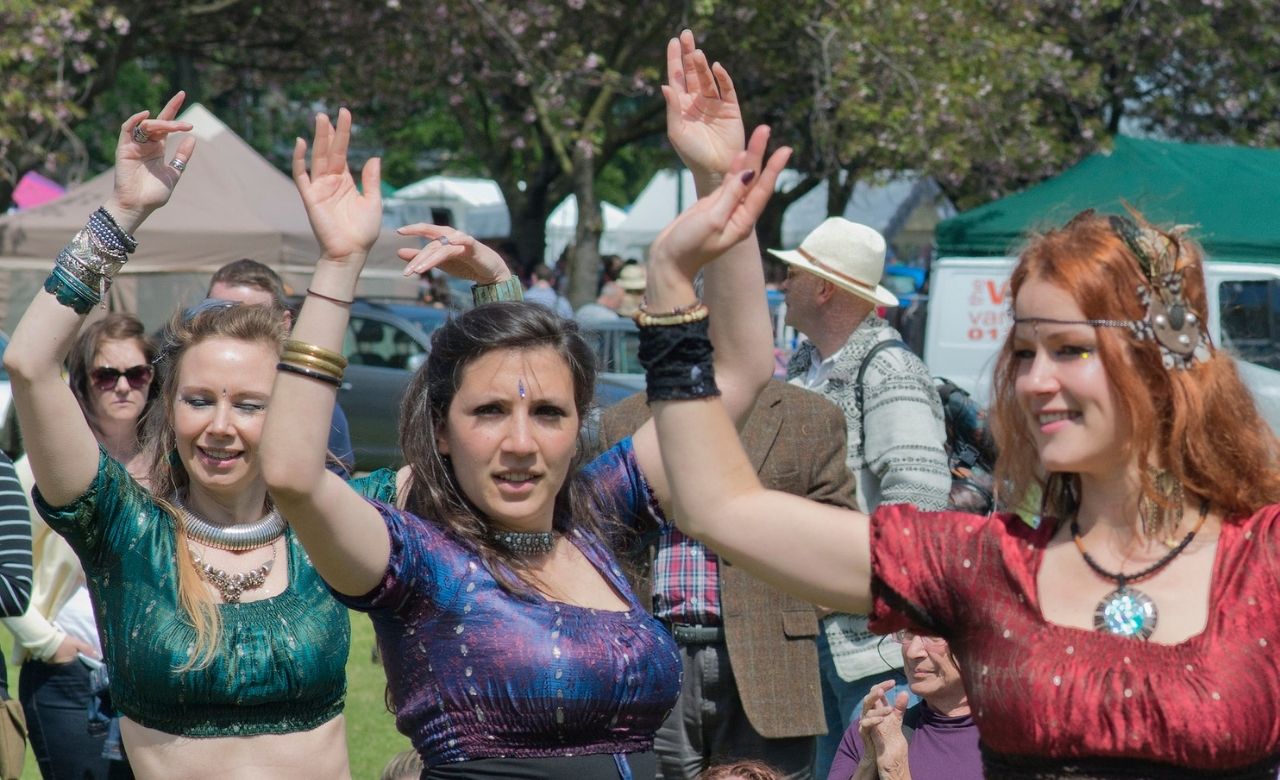
With its origins in the Middle East, belly dancing became well-known in the Western world and evolved to varying degrees. With it, it became a cultural dance and a form of exotic entertainment. Today, belly dancing has become famous around the world.
Early Belly Dancing History
The term belly dance comes from the translation of the French word danse du ventre. The French term first appeared in a painting by Jean-Léon Gérôme called The Dance of the Almeh. Ultimately, the term’s origin was a Westernization of the Egyptian forms of dance called Raqs Sharqi and Raqs Baladi.
While records of dance forms similar to belly dancing were found since at least Roman times, belly dancing, as we know it today, has its origins in Egypt, which was part of the Ottoman Empire at the time. Its roots can be traced to the 19th century Egyptian Ghawazi dance, and the 20th century Arabic dance, Raqs Sharqi.
Although Egypt is located in Asia and Africa with contributions and investments from other nations and empires such as the Ottomans, French, British, and the United States, belly dancing is not applied anymore to the one that originated in Egypt. The term has been liberally used to describe other similar dance forms around the world, regardless of their geographic origins.

Origins in Egypt
Some of the earliest belly dancers were the Awalim and Ghawazi. When Europeans recorded their travels in Egypt during the 18th and 19th centuries, they recorded the dances of the Awalim and Ghawazi. While both Awalim and Ghawazi had similar dance forms, there were major differences. The Awalim came from the upper classes and did not just perform but also sang and recited poetry, indicating their high degree of education. In contrast, the Ghawazi comprised of lower-class women who danced as a form of income. Before the Ghawazi were banned and banished to Upper Egypt in 1834, it was a reliable source of investment and insurance towards their future, since they were lower class.
While the Ghawazi originally started by Gypsies from Egypt, it eventually encompassed lower-class women. After their banishment to Upper Egypt, they performed and thrived afterward in 1834. When Europeans recorded the acts of the Ghawazi, it became a sensation when it was eventually published back in Europe. The attire worn by these dancers became the basis for the modern belly dancing attire.

From the early Ghawazi, Raqs Sharqi was developed in the mid-19th century in the nightclubs of Cairo. These nightclub performers eventually made their way into Egyptian cinema. From there, belly dancing became world-famous. In the United States, belly dancing became first known thanks to the 1893 Chicago World’s Fair. Many give credit to Sol Bloom, the Fair’s entertainment director, as the one who coined the term belly dancing, although he used danse du ventre to describe the dance he saw in French-controlled Algeria.
The United States saw the rise of belly dancing from 1960s up to the 1970s. This was the time when the women broke out of their typical roles in society and embraced a more free-spirited nature. Given its sensual reputation, the western women aimed to reinvent belly dancing beyond its stereotypes. Instead, they portrayed it as a means of celebrating female practices such as new-age goddess worship and childbirth.
History of Belly Dancing Props and Costumes
Belly dancers are known for their picturesque props and costumes. The earliest recorded costumes consisted of long skirts or flowing pants, a fitted bra top, and a loose hip-belt. These were then matched with adornments of coins, pieces of jewelry, and fringes. This type of costume, among the earliest, is still prevalent to this day.

Today, an array of costumes is worn for belly dancing all around the world. While it still used the early base costume from the past, investments are made in new costumes to increase every performance’s entertainment and wow factor. Many traditional belly dance studios tend to discourage the use of props, as they tend to focus on the artistry of the dance itself. However, props are commonly used for belly dancing in many areas. Typical props include finger cymbals, swords, canes, and veils. Each choreographer and dancer can choose which props to use to their liking.
Photo Credits:
Cover Flickr
Photo 1 Pixabay
Photo 2 Wikimedia Commons
Photo 2 Wikimedia Commons

